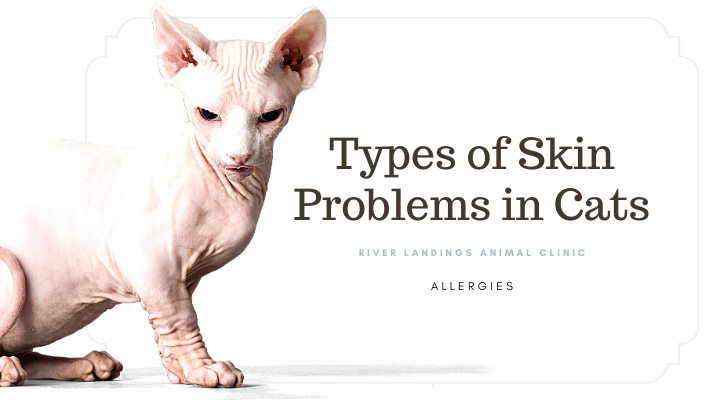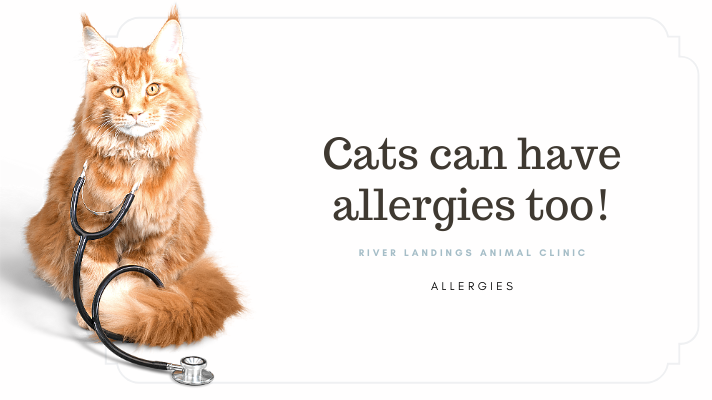Fleabites make most pets itch. But did you know—some cats and dogs are allergic to the pests! Your doctor may call this flea allergy dermatitis (FAD) or fleabite hypersensitivity. If your pet has a flea allergy, even one or two flea bites can make your pet's life miserable.
Many cats and dogs are allergic to fleas. In fact, FAD is the most common skin disease in dogs in the U.S. Flea allergies often spike in the summer, and pets that have seasonal allergies are more likely to have an allergic reaction to fleabites, but any pet can get FAD.
Spot the Signs
When a flea bites your dog or cat to draw blood, it injects saliva into your pet’s skin. Flea saliva is irritating to most animals, including humans. But the compounds in it can trigger an allergic reaction in some pets.
Everyday itching from a flea bite isn’t the same thing as a flea allergy. If your pet has FAD, the itching will be intense and last longer. Your pet may itch for up to 2 weeks after a bite and the itching will be severe and damaging to their skin.
Other signs of FAD include:
A rash on your pet’s skin or raw, irritated, or bleeding areas on your pet’s body. Dogs usually have it near their back legs, stomach, or tail area. Cats are more likely to have it near their neck and face.
Hair loss, especially in areas where the bites happened
Small red or pink raised bumps that may look like pimples
Constant itching, biting, clawing, or grooming
Help Your Pet Get Relief
Unfortunately, this isn't a one and done situation—it's a process.
Step 1: See your pet’s veterinarian. Don’t assume that because you can’t see any fleas, your dog or cat doesn’t have a flea allergy. Often, animals with one groom themselves constantly. They may remove any fleas from their bodies — but the allergic reaction from bites can last for weeks.
If your dog or cat is scratching itself, set up an appointment with your veterinarian. Fleas and flea allergies are common, but it could also be another health problem, like a tick bite. It’s important to get the right diagnosis before your pet starts any type of treatment.
A vet will check your pet’s fur and skin thoroughly for fleas and “flea dirt,” which is flea poop that looks like pepper flakes. It often turns red when it's wet. If the vet suspects another cause for your pet’s itching, they may order certain blood or skin tests to be sure. Your vet also makes sure that your dog or cat doesn’t have any open wounds. If a pet is itching or chewing on itself a lot, bacteria or yeast can get into the skin and cause an infection.
Step 2: Break the cycle. Putting an end to your pet’s flea allergy means getting rid of fleas. Though they're more common in warmer months, fleas can live year-round indoors. Once they lay eggs, new fleas hatch and then lay more eggs, which means your pet is constantly exposed.
Using year-round treatment with a flea preventative medication can help break the cycle and prevent future allergic reactions.
Topical medications and oral meds kill adult fleas. Talk to your pet’s veterinarian about which treatment is best for your pet.
Medication is only half the battle. Fleas don’t actually live on animals. They live in carpets, bedding, and other surfaces in your home and jump onto your pet to eat. That’s why it’s important to wash your bedding, your pet’s bedding, and your throw rugs with detergent and warm water.
To remove fleas, flea eggs, and larvae, vacuum your carpets, larger rugs, and chair and sofa cushions. Empty the vacuum bag or canister afterward. Make sure to do it outside, or they could get back into your living space.
You may also consider using a flea spray on your carpets and upholstered furniture. Be sure to keep your pets and your family away from sprayed areas until they’ve dried. Having fleas in teh home doesn't mean your house is dirty or that you are a bad pet owner. Fleas are attracted to food sources, which is any pet cat or dog.
Step 3: Ease the itch. Your pet’s veterinarian will recommend a topical, oral, or injected medication to ease your pet’s itching and inflammation. If your dog or cat has an infection, the veterinarian may also prescribe an antibiotic or antifungal medicine.
You may have heard that human antihistamines can treat pet allergies. The trouble is, they’re often not strong enough to ease inflammation for many pets with a flea allergy, and they don’t work at all for many animals. Talk to your vet before using them for your pet to determine the best solution and dosage if so.
At home, one of the easiest ways to help ease your dog or cat’s irritation is to give them a bath with cool water. Unless your pet hates water, this can help by making their skin feel better and removing some fleas.
Step 4: Avoid irritants. Don’t use flea shampoo or other topical flea products without talking to your pet’s veterinarian first. Flea shampoos and sprays can contain alcohol and other chemicals that can make a rash or open wounds worse!
You may have seen onion or garlic tablets marketed for pet flea relief, but they can be toxic to dogs and cats. Skip essential oils and products that contain them, too. This can cause further irritation to your pet's skin.
Step 5: Stay in touch with your pet’s veterinarian. Regular checkups are especially important for spotting infection and making sure your flea and allergy treatment plans are working.
If you have a question between scheduled visits, don’t hesitate to call your vet! It is always better to be safe than sorry. The longer something is put off because it doesn't seem serious, could end up something far worse while waiting. Early detection and treatment is of utmost importance.
Hear From Us Again
Don't forget to subscribe to our email newsletter for more recipes, articles, and clinic updates delivered to your inbox (here). Or, you can keep up to date by liking and following our Facebook page (here).
Related: We have more information under our cat health + dog health categories.





